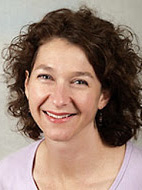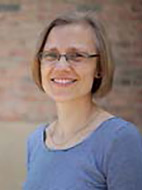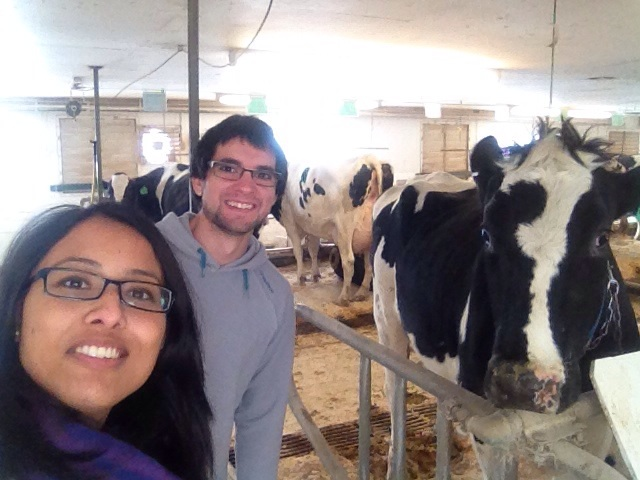Tag Archives: Michigan
News
Sara Meerow and Joshua Newell’s paper on Defining Urban Resilience wins the 2016 Weddle Prize
Congratulations to our SRN members, Sara Meerow and Josh Newell, who have won Landscape & Urban Planning’s third annual Weddle Prize. Their paper examines the definition and usage of urban resilience and proposes an updated definition for the future. The award is given to papers where a student served as lead author and the paper exemplified “rigorous scholarship that aims to achieve environmentally and socially beneficial design or planning of landscapes.”
Sara Meerow, Joshua P. Newell, and Melissa Stults. 2016. Defining urban resilience: A review. Landscape and Urban Planning V 147. The full paper is available here.
News
Virtual Forum: Water-Wastewater and Stormwater-Green Infrastructure, Pt. 1
Join us today, Friday, 4/14, for a discussion on: Water-Wastewater and Stormwater-Green Infrastructure, Pt.1:
Led by: Dr. Paige Novak (University of Minnesota) & Dr. Lut Raskin (University of Michigan)
Discussing: What does (and can and should) wastewater treatment look like in the context of an integrated, distributed FEWS network?
Friday April 14, 2:30 to 4:30 PM Central
To view or join the discussion on Friday: Join Here, Access Code: 383-419-437.
These lectures and discussions are part of a course offered by the MSSTEP Program and the Sustainable Healthy Cities Network, Infrastructure Transformations for Sustainable Healthy Cities: Design and Policy.


News
Student Feature: Turning waste into biofuel by Shilva Shrestha and Xavier Fonoll at UMich
Shilva Shrestha, a current PhD student, and Xavier Fonoll, a post-doctoral fellow, in Professor Lutgarde Raskin’s research group at the University of Michigan, started a collaborative project between the University of Michigan, the University of Hawaii, and the University of Barcelona. They started working as a visiting master’s student and a visiting PhD student, respectively, at the University of Michigan in the summer of 2014. Impressed with the work atmosphere, rigor, and diverse approaches to research in the Raskin research group, both of them decided to take their collaboration further and returned to the University of Michigan after finishing their degrees at the University of Hawaii and the University of Barcelona, respectively, to start another phase of their research careers. Here is a brief introduction to their current work:
Annual worldwide waste generation is expected to increase by 70% by 2025. At the same time, there has also been a paradigm shift in our approach to waste treatment, transitioning from simple landfill disposal or incineration to utilizing waste to produce fuels and chemicals. Anaerobic digestion (AD) has been a popular technology to transform organic wastes into energy in the form of biogas. However, without government subsidies and appropriate governmental policies for promoting methane based biofuel, the economic viability of AD is often limited. Producing high-value  chemicals from organic waste streams using anaerobic technology has the potential to increase the economic value of AD technology, and also addresses concerns of environmental sustainability by proper waste management, preventing greenhouse gas (GHG) emissions, and decreasing resource depletion through the reduced use of petrochemical, plant, and animal oil sources. Anaerobic microbiomes can be used to produce medium chain fatty acids (MCFAs) by chain elongation of short chain carboxylates, the intermediates of AD. MCFAs are saturated fatty acids and have chain length from six to twelve carbons and can be used as the precursors for liquid fuels (alcohols and alkanes), animal feed additives, antimicrobials, fragrances, pharmaceuticals, and dyes.
chemicals from organic waste streams using anaerobic technology has the potential to increase the economic value of AD technology, and also addresses concerns of environmental sustainability by proper waste management, preventing greenhouse gas (GHG) emissions, and decreasing resource depletion through the reduced use of petrochemical, plant, and animal oil sources. Anaerobic microbiomes can be used to produce medium chain fatty acids (MCFAs) by chain elongation of short chain carboxylates, the intermediates of AD. MCFAs are saturated fatty acids and have chain length from six to twelve carbons and can be used as the precursors for liquid fuels (alcohols and alkanes), animal feed additives, antimicrobials, fragrances, pharmaceuticals, and dyes.
To maximize the production of MCFAs, a two-phase bioreactor system is being built. The results from Shilva’s and Xavier’s previous collaborative project, in which rumen content was used as inoculum and co-substrate to overcome the slow hydrolysis of lignocellulosic substrates, fostered the idea of designing the first bioreactor. The first bioreactor hydrolyzes organic waste and subsequently ferments the soluble products to VFAs. It mimics the behavior of the rumen (cow stomach) and the design intends to shape the reactor microbiome to be as similar as the rumen microbiome with high levels of hydrolytic microorganisms. The second bioreactor supports the chain elongation reaction using the VFAs produced in the first bioreactor.
News
Professor Lutgarde Raskin wins the ISME/IWA Biocluster Award Grand Prize
Congratulations to SRN member, Professor Lutgarde Raskin, who has won the ISME/IWA Biocluster Award Grand Prize in 2016. This prestigious prize rewards interdisciplinary research at the interface of microbial ecology and water/wastewater treatment.
News
Sara Meerow and Josh Newell Publish on Spatial Planning for Green Infrastructure in Detroit
SRN student Sara Meerow and faculty member Josh Newell, both at the University of Michigan, developed a Green Infrastructure Spatial Planning (GISP) model to maximize the ecosystem services of green infrastructure. They applied this stakeholder-driven model to Detroit to identify priority areas across the city where multiple environmental, health, wealth, and livability benefits of green infrastructure are needed most, and compared these results with the locations of current projects.
The full article, Spatial planning for multifunctional green infrastructure: Growing resilience in Detroit is published in Landscape and Urban Planning and available here.
News
Virtual Forum: Elliott, Motzny and Foster discuss Water-Wastewater and Stormwater-Green Infrastructure, Pt. 2
Join us Friday, 4/21, for a discussion on: Water-Wastewater and Stormwater-Green Infrastructure, Pt.2: Research on Environment, Health, and Well-Being for Urban Green Infrastructure
Led by: Robert Elliott and Amy Motzny (Columbia University, Advisor: Dr. Patricia Culligan) & Alec Foster (University of Michigan, Advisor: Josh Newell)
Friday April 21, 2:30 to 4:30 PM Central
To view or join the discussion on Friday: Join Here, Access Code: 383-419-437.
These lectures and discussions are part of a course offered by the MSSTEP Program and the Sustainable Healthy Cities Network, Infrastructure Transformations for Sustainable Healthy Cities: Design and Policy.
News
Columbia Students and Faculty Complete First Detroit Collaboration

Written by Kirk Finkel and Richard Plunz, Columbia University Graduate School of Architecture, Planning and Preservation
The Columbia University Urban Ecology Studio is an advanced design course for students in architecture, engineering, and urban planning, which focuses on urban development and its social and ecological impacts. The Fall Semester 2015 Studio worked in Detroit addressing next generation infrastructural issues within the EHL (Environmental Sustainability, Health, Livability) framework of the Sustainable Healthy Cities Research Network. The first stage of this collaboration was completed with presentations of six urban design projects at Columbia University in December 2015.
The studio comprised six Masters-level architectural students and eight Senior Undergraduate, Masters and PhD engineering students, who formed into interdisciplinary design teams of two to three students each. In October, the studio visited Detroit and met with its local partner; the Detroit Collaborative Design Center (DCDC), alongside students and faculty from the University of Michigan’s Urban Design Studio. The Columbia University cohort then returned to New York and began to dissect their on-site experiences and adapt the research ideas that they had initially developed. Over the course of the next few months, each of the six teams honed their topics and presented their work to a rotating internal and external jury through desk critiques, pin-up discussions, and formal reviews. Faculty from the engineering and architecture schools met together several times weekly with the students to facilitate discussion and support the maturing of their proposals.
Building off of Detroit Collaborative Design Center proposal for day lighting the Bloody Run Creek watershed, each interdisciplinary team of students explored strategies and catalysts for new growth in Detroit. Students adopted site-specific and program-driven designs, which were required to resonate at both a local and city-wide scale. An in-depth examination of growth was derived from a past-to-present study of the efficiencies and inefficiencies of the Detroit city-grid, as well as the existing regional fabric. A major challenge for each team was developing a mature and comprehensive proposal, which observed feasibility, scope and phasing in an implementable manner, together with cost-effectiveness and a host of other related challenges. The studio produced six final design proposals, which included proposals for localized stormwater management through soil-aeration and smart planting in vacant lots, a new Detroit-based flower industry in an abandoned auto-plant, a new technology campus of driverless cars and sustainably harvested energy, a new connected multi-modal transportation system for neighborhood development, an extension of existing public markets that focused on local food production and included energy generating bio-digesters for food waste, and an innovative strategy for cost-effective sustainable construction using blighted materials.
The studio’s architectural and engineering partnership generated both responsive and innovative design schemes, which have tremendous prospective value for the City of Detroit. As a whole, the studio has compiled a family of proposals that have the potential to serve as part of a strategic masterplan. In particular, the studio designs explore forms for new distributed infrastructure within the context of a city with diminishing traditional infrastructure needs; and the possibilities for new approaches to infrastructure to foster economic development and social cohesion.
The Urban Ecology Studio is co-taught each year by SRN faculty Patricia Culligan and Richard Plunz. In this studio they were joined by architect Kirk Finkel, landscape architect and Assistant Research Scientist Amy Motzny, and civil engineer and Earth Institute Post-Doctoral Research Scholar Robert Elliott. Professors Culligan and Plunz are currently leading efforts to explore the role of green infrastructure in urban stormwater management and community development in New York City’s Bronx River Sewershed. They decided to focus this year’s Studio on stormwater management and community development ideas for Detroit, in order to begin the integration of new ideas and strategies for distributed infrastructure systems across the SRN testbeds in New York City and Detroit.
News
University of Michigan Hosts Workshop to Reshape Urban Food, Energy, and Water Flows

Approximately fifty researchers and stakeholders participated in an NSF-funded workshop held in Ann Arbor on October 5-6. Disciplines represented range from geography to engineering to architecture and computer science. The workshop focused on the prospects for ‘scaling-up’ urban agriculture to mitigate food, energy, and water impacts. Cities have become dominant demand drivers in global food-energy-water (FEW) cycles.
Outcomes from the workshop include a white paper to help guide NSF funding in this area and a journal article. The workshop results will also be used by the SRN in this exciting new research area.
SRN member Joshua Newell, University of Michigan (UM), was the principal investigator and Anu Ramaswami was a Co-PI of this initiative. Other Co-PIs included Glen Daigger (UM, Engineering), Nancy Love (UM, Engineering), and Nathan McClintock (Portland State, Urban Planning).
For more information about the workshop, please contact jpnewell@umich.edu.
For more information about urban sustainability initiative at the UM, see http://urbansustainability.
News
U-M Part of New Network to Build Sustainable, Livable Cities
The University of Michigan is one of nine research universities in a new international effort, funded by a $12 million award from the National Science Foundation, to build better cities of the future.
The University of Minnesota-led project brings together scientists, industry leaders and policy partners committed to creating cities that are highly functional, that promote the health of residents and the environment, and that have that intangible vibe, called livability, that makes cities desirable places to live and work.
The new project, funded by NSF’s Sustainability Research Network, will focus on ways to reimagine the energy grids, road networks, green spaces, and food and water systems that form the urban infrastructure. Emerging trends suggest that cities may be better off building more local systems; this movement toward “distributed” infrastructure is gaining momentum globally.
“We have to think in new ways about a city’s physical infrastructure to develop sustainable solutions,” said Anu Ramaswami of the University of Minnesota, the project’s lead investigator and director. “Understanding that these systems are interconnected serves as a foundation for this work.”
The U-M portion is roughly $750,000 over four years and involves green infrastructure, urban farming — including a Detroit aquaculture project to raise freshwater shrimp — and the investigation of innovative techniques to recover energy and water from wastes.
The principal investigator of the Michigan portion is geographer Joshua Newell, assistant professor of natural resources and environment. The co-principal investigator is Lutgarde Raskin, Altarum/ERIM Russell D. O’Neal Professor of Engineering and professor of civil and environmental engineering.
Green infrastructure includes stormwater management projects such as green roofs, rain gardens, bioswales and tree-lined streets, as well as the greenways, parks, urban farms and protected river basins that weave through a city’s environs. Urban green infrastructure projects benefit natural ecosystems, increase local property values and have other social, economic, health and psychological benefits.
But such projects tend to be driven by stormwater management goals, with few studies examining tradeoffs and potential synergies between a suite of benefits, said Newell.
“We need to consider how these green-infrastructure interventions affect a city’s environmental and social-justice fabric. Are they being placed in communities and neighborhoods that may be especially vulnerable to climate change or that suffer from park poverty?” Newell said. “We need to do a much better job at identifying hotspots in the urban landscape that offer the potential to maximize benefits for the many, rather than the few.”
Michigan researchers and their partners will identify optimal sites — called hotspots — for future green infrastructure and urban agriculture development. To find the hotspots, they will create a “spatial planning model” that integrates key ecological and socioeconomic indicators, including flooding, social vulnerability, park access, air pollution, urban heat islands and green-space connectivity.
The model will be refined using data collected during case studies in Detroit, New York City and Minneapolis-St. Paul.
Raskin’s team will use the hotspots identified by Newell to select locations suitable for the development of community-scale waste treatment systems that recover water and energy from a variety of sources.
A technology called an anaerobic membrane bioreactor will recover energy in the form of methane gas from household wastewater, food waste, garden waste and urban food-production waste. Effluent produced by the bioreactor can be used directly as irrigation water or treated further to produce drinking water.
“The feasibility of using an anaerobic membrane bioreactor in conjunction with urban food production in Detroit will be examined,” Raskin said. “This urban test bed will include a recirculating shrimp aquaculture system focused on the distributed production of freshwater shrimp.”
Partners in the U-M portion of the project include Detroit Future City, the Southeast Council of Michigan Governments, Columbia University’s Earth Institute, the University of Minnesota, and the Metropolitan Council of the Minneapolis-St. Paul metro area.
Michigan faculty collaborators include Steven Skerlos, Arthur F. Thurnau Professor, and professor of mechanical engineering, and environmental engineering, and Jim Diana, professor of natural resources and director of the Michigan Sea Grant. Several U-M graduate students and postdoctoral researchers also will be involved.
The $12 million, NSF-funded Sustainability Research Network project is titled “SRN: Integrated Urban Infrastructure Solutions for Environmentally Sustainable, Healthy, and Livable Cities.” The network will connect research universities, major metropolitan cities in the U.S. and India, infrastructure firms and policy groups.
In addition to Michigan, Minnesota and Columbia, the university partners are Georgia Tech, Colorado State, Florida State, Indian Institute of Technology-Madras, Ohio State and Texas.
The project includes 25 faculty members from the nine universities and will involve more than 40 graduate students conducting research in cross-university interdisciplinary teams.
By 2050, it is estimated that 3 billion additional people will inhabit cities worldwide, meaning that two-thirds of the world’s population will live in urban areas. Most of the infrastructure needed to accommodate that growth has yet to be built or will need to be rehabilitated from existing systems.
The NSF-funded researchers will try to identify the optimal infrastructure mix by examining local and large projects in diverse cities in the U.S. and India. In addition, they will explore the public attitudes and policies that can help achieve the desired urban transitions.
The work is organized into three themes. Theme 1 will develop science-based methods to track the environmental sustainability, health and livability of cities. Theme 2 will identify the innovations needed in infrastructure design and social institutions to advance environment, health and livability outcomes in cities.
In Theme 3, researchers will use knowledge gained in Themes 1 and 2 to model various policy and technology scenarios in diverse world cities. They will examine small, fast-growing cities like Fort Collins, Colo.; shrinking cities like Detroit; stable cities with aging infrastructure like New York City and Minneapolis-St. Paul; and emerging Indian cities that hope to leapfrog into next-generation infrastructure systems.
– Kent Love-Ramirez, University of Minnesota
– Jim Erickson, University of Michigan News Service
This article was originally posted by the University of Michigan.




